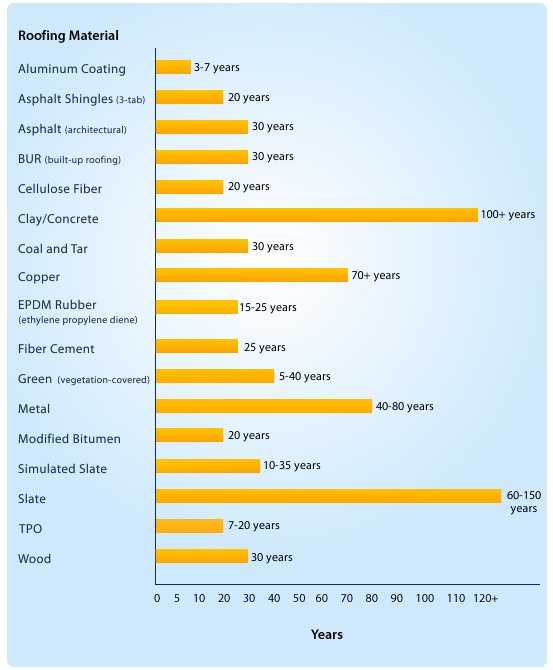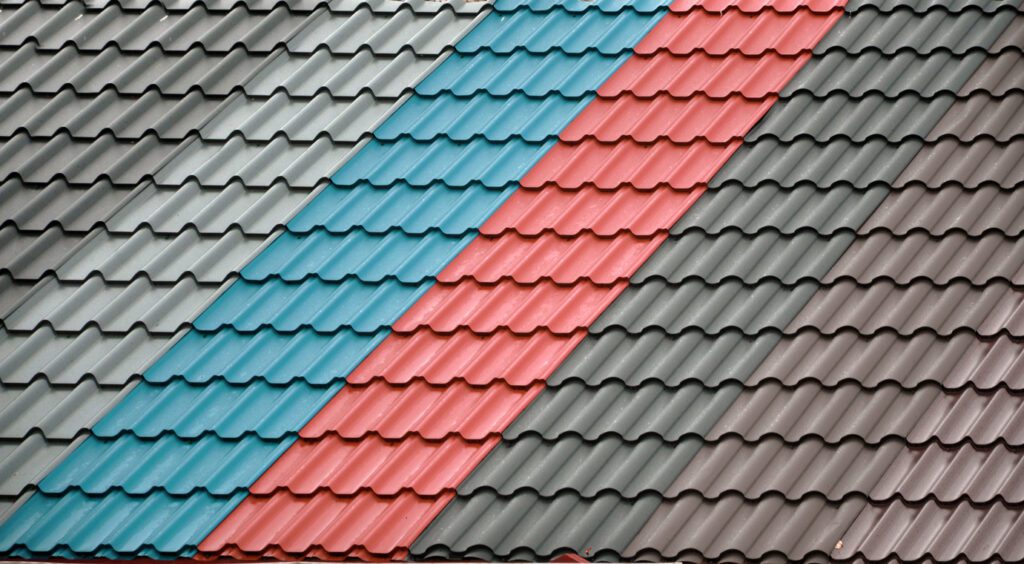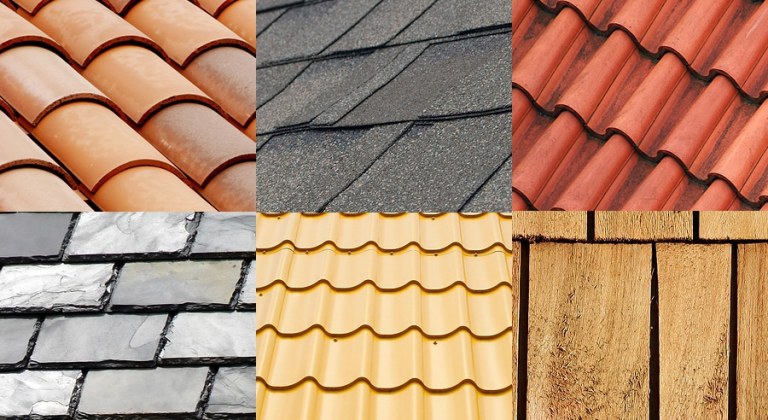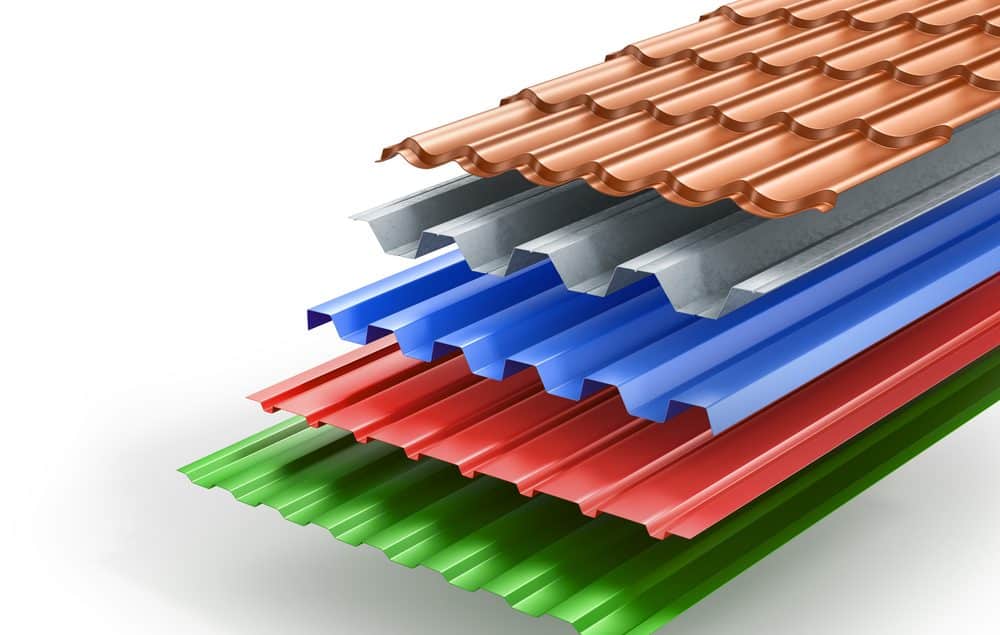If you’re in the market for a new roof, you’re probably wondering which roofing material will stand the test of time. Well, look no further! In this article, we’ll uncover the secrets behind the durability and longevity of various roofing materials. From traditional asphalt shingles to modern metal roofs, we’ll explore the pros and cons of each option, helping you make an informed decision that will keep your roof sturdy and your wallet happy for decades to come. So, whether you’re building a new home or it’s time for a much-needed roof replacement, join us on this journey as we discover what roofing material lasts the longest.

1. Asphalt Shingles
1.1 Composition
Asphalt shingles are widely used for residential roofing due to their affordability and durability. They are made of a fiberglass mat coated with asphalt and topped with mineral granules. The composition of asphalt shingles provides them with the necessary strength and resistance to withstand various weather conditions.
1.2 Lifespan
The lifespan of asphalt shingles typically ranges from 15 to 30 years, depending on the quality and maintenance. Regular inspection and prompt repairs can help extend their lifespan. However, severe weather conditions, such as hailstorms or strong winds, can significantly reduce their durability.
1.3 Pros
Asphalt shingles are a popular choice for homeowners due to their affordability. They are relatively easy to install and repair, making them convenient for both homeowners and contractors. Additionally, asphalt shingles come in a wide range of colors and styles, allowing homeowners to choose the one that best suits their aesthetic preferences.
1.4 Cons
Despite their affordability, asphalt shingles have some drawbacks. They are not as durable as some other roofing materials, and their lifespan is shorter compared to options like metal or slate. Additionally, they are more prone to damage from extreme weather conditions, which can lead to leaks and costly repairs.
2. Metal
2.1 Types of Metal Roofs
Metal roofs come in various types, including aluminum, steel, copper, and zinc. Each type offers unique benefits and can be chosen based on factors like cost, durability, and design preference. Metal roofs can be installed as panels or shingles, providing versatility in terms of aesthetic appeal.
2.2 Lifespan
Metal roofs have an impressive lifespan, often lasting more than 50 years, with some materials even lasting up to 100 years. Their exceptional durability allows them to withstand harsh weather conditions, resist corrosion, and maintain structural integrity over decades.
2.3 Pros
One of the significant advantages of metal roofs is their longevity. They are highly resistant to fire, rotting, and insect damage, making them low-maintenance options for homeowners. Metal roofs are also energy-efficient, reflecting sunlight and reducing cooling costs during hot summers. Additionally, they come in a wide variety of colors and styles, allowing homeowners to achieve their desired aesthetic.
2.4 Cons
Despite their numerous benefits, metal roofs can be more expensive than other roofing materials initially. The installation process may require professional assistance, increasing the overall cost even more. Metal roofs can also be noisy during heavy rainfall or hailstorms, although proper insulation can help alleviate this issue.
3. Clay and Concrete Tiles
3.1 Lifespan
Clay and concrete tiles excel in terms of longevity, with lifespans that can exceed 50 years. Proper installation and routine maintenance can significantly extend their lifespan, ensuring that they remain intact and functional for several decades.
3.2 Pros
Clay and concrete tiles offer a timeless and elegant appearance to homes. They are available in a range of colors and shapes, allowing homeowners to achieve a desired aesthetic. These tiles are also highly durable and require minimal maintenance over their lifespan. Their ability to withstand extreme weather conditions, including high winds and heavy rainfall, makes them a popular choice for regions prone to such events.
3.3 Cons
Clay and concrete tiles are significantly heavier than other roofing materials, requiring strong structural support. The installation process may be more complex and time-consuming, often requiring professional expertise. Additionally, these tiles can be more expensive compared to other options, and individual tile replacement can be challenging if damage occurs.
4. Slate
4.1 Lifespan
Slate roofs are renowned for their exceptional longevity, surpassing 100 years in some cases. The natural stone material offers superior durability, making it highly resistant to severe weather conditions and ensuring its longevity.
4.2 Pros
The timeless beauty and elegance of slate roofs make them a desirable choice for homeowners seeking a premium roofing material. Slate tiles are available in various sizes, thicknesses, and colors, enabling homeowners to create a custom look for their homes. Apart from their aesthetic appeal, slate roofs have remarkable durability, low-maintenance requirements, and excellent resistance to fire and pests.
4.3 Cons
While slate roofs offer exceptional longevity, they come with a higher initial cost compared to other roofing materials. The weight of slate also requires sufficient structural support during installation. Inexperienced or unskilled installation can result in cracked or broken tiles, potentially leading to leaks and costly repairs.

5. Wood Shake
5.1 Lifespan
Wood shake roofs have a lifespan averaging around 30 to 40 years when properly installed and maintained. Regular inspections, treatment, and repairs can help extend their lifespan and ensure optimal performance.
5.2 Pros
Wood shake roofs offer a natural, rustic charm that enhances the overall aesthetic appeal of a home. They are environmentally friendly and can be sourced sustainably. Wood shakes provide good insulation, helping to regulate indoor temperatures and potentially reducing energy consumption. Their natural resistance to extreme weather conditions, such as strong winds, makes them a durable choice.
5.3 Cons
Wood shake roofs require regular maintenance and treatment to prevent issues like rot or insect infestations. They are more susceptible to fire compared to other roofing materials, which can impact insurance premiums. The initial cost of wood shake roofing can also be higher than some alternatives, and individual shake replacement can be challenging.
6. Synthetic Roofing Materials
6.1 Composition
Synthetic roofing materials are engineered to mimic the appearance of traditional roofing materials while offering enhanced durability and performance. They can be made from a combination of materials like rubber, plastic, and polymers.
6.2 Lifespan
The lifespan of synthetic roofing materials varies depending on the specific product and brand. However, most synthetic options offer a lifespan of 50 years or more. Their composition allows them to withstand harsh weather conditions, resist fading, and maintain their aesthetic appeal over time.
6.3 Pros
Synthetic roofing materials provide homeowners with a cost-effective alternative to traditional options. They are lightweight, making installation easier and reducing stress on the roof structure. Synthetic materials often come with enhanced resistance to fire, impact, and UV radiation, providing added protection for the home. They also offer a wide range of colors and styles, allowing homeowners to achieve a desired look without the high costs associated with natural materials.
6.4 Cons
While synthetic roofing materials offer numerous benefits, they are still relatively new in the market compared to traditional options. Consequently, their long-term performance and durability may not be as well-established. Homeowners may also prefer the authentic look and feel of natural materials, which synthetic options may not perfectly replicate.

7. Green Roofs
7.1 Lifespan
The lifespan of green roofs depends on various factors, including the type of vegetation, climate, and maintenance. With proper care, green roofs can last between 30 and 50 years.
7.2 Pros
Green roofs provide numerous environmental benefits, including improved air quality, insulation, and stormwater management. They create a natural habitat for birds, insects, and other wildlife, promoting biodiversity in urban areas. Additionally, green roofs can reduce energy costs by adding insulation to the building and mitigating the urban heat island effect.
7.3 Cons
Green roofs require specialized installation and maintenance, which can be more labor-intensive and costly compared to traditional roofing systems. The added weight of the vegetation and growing medium necessitates a robust roof structure. Regular inspections and upkeep are essential to prevent issues like leaks or plant overgrowth.
8. Solar Roofing
8.1 Lifespan
Solar roofing systems typically have a lifespan of 25 to 30 years. The longevity of the solar panels depends on their quality, maintenance, and exposure to environmental factors.
8.2 Pros
Solar roofing offers numerous benefits beyond traditional roofing materials. It harnesses solar energy to generate electricity, leading to reduced reliance on the grid and potential savings on utility bills. Solar roofs contribute to a greener environment by utilizing renewable energy. They also provide an aesthetic advantage, blending seamlessly with the overall architecture of the home.
8.3 Cons
The initial cost of installing a solar roofing system can be higher compared to traditional roofing options. The efficiency of the solar panels may decrease over time, affecting their energy output. Regular maintenance and occasional replacement of worn-out panels may be required. Additionally, the installation process may require coordination with solar energy professionals, potentially adding complexity and time to the overall project.

9. Built-Up Roofing
9.1 Lifespan
Built-up roofing, commonly known as BUR, has a lifespan of approximately 15 to 30 years, depending on various factors such as maintenance, weather conditions, and material quality.
9.2 Pros
Built-up roofing provides a cost-effective solution for flat or low-sloped roofs. The multiple layers of asphalt and reinforcing materials create a durable and waterproof surface. BUR also offers excellent fire resistance and can withstand foot traffic, making it suitable for commercial buildings.
9.3 Cons
The installation process of built-up roofing can be time-consuming and requires professional expertise. The layers of materials contribute to a heavy roof structure, which may warrant additional structural support. Built-up roofing may be more susceptible to damage from extreme temperature fluctuations or ponding water, leading to potential leaks or compromised performance.
10. Thatched Roofing
10.1 Lifespan
The lifespan of thatched roofing can vary significantly depending on the type of thatch used, local climate, and maintenance. When properly installed and maintained, thatched roofs can last anywhere from 20 to 60 years.
10.2 Pros
Thatched roofs offer a unique and traditional aesthetic that adds charm and character to homes. They provide excellent insulation, keeping homes warm in winter and cool in summer. Thatch is a sustainable material, often sourced from locally available vegetation. Thatched roofs also have good resistance to wind and are relatively easy to repair.
10.3 Cons
Thatched roofs require regular maintenance to prevent issues like rot, mold, or insect infestations. The dense insulation provided by thatch can also limit natural light penetration into the home. Thatched roofs may be more susceptible to fire, although applying appropriate fire retardants can minimize the risk. The initial cost of installing a thatched roof can be higher than other roofing materials, and skilled thatchers may be more challenging to find.
